A Newbie Guide to Kiteboard Course Race Administration
Published on May 12th, 2014
During the time when Kiteboard Course racing evolved on San Francisco Bay, the regatta team at St Francis Yacht Club was learning too. But when the U.S. Nationals came to San Diego Yacht Club, Regatta Manager Jeff Johnson quickly had to get up to speed on the particulars of hosting a kiteboard event. Here Jeff shares the lessons learned…
I got a lot of input and support from local kiters Bill Hardesty, Nico Laundour, Artie Means, and Ty Reed who had competed at events in San Francisco. I also received guidance from Race Director Robbie Dean, who has been involved with the growth of kite racing in San Francisco. It does take a village.
Our club is tucked away inside San Diego Bay, with our standard keelboat race course several miles offshore. However, having beach access is a fundamental part of the Kiteboard game. Without good, quick access to shore, the venue is no good. We were able to set up near a beach with little swell, and with a reaching angle which proved ideal.
The NOR was pretty standard and International Kiteboarding Association (IKA) has a good set of class competition guidelines. The Sailing Instructions were easy at first, but in the midst of the event, I realized there are many things that are subtly different about this competition… (in no specific order)!
1. Sail Numbers. Kites don’t have sail numbers, so they use jerseys. It is best to issue matching event jerseys with high contrast numbers. Otherwise, they will show up with a wide variety of prior event jerseys, perhaps with similar numbers, some are old sports jerseys, or fan jerseys, or T-shirts with bleeding marker numbers, etc. Put it in the budget.
2. Start Sequence. Most kiteboarders don’t know the Rule 26 start sequence. Also, even if they do, it occurred to me that it is pretty antiquated in the face of how fast these competitors move. I stood on the bow of the boat with a bull horn and shouted the time at 30 second and 1 minute intervals for anyone curious. A digital clock with the count-down would be best. If not that, maybe Appendix S (like collegiate) would better address the time remaining issue. Pretty much, they all line up to weather of the line at 1 minute to go as it is all about acceleration. Moving at 25 kts, they chew up 1000′ of start line pretty quick. God forbid if they misjudged the transit of our stern (160 lbs sailor vs 800 lbs motor will not be kind).
3. Logistics. Most kites want to return to shore after one race, or for sure after two races, to adjust / swap equipment or just rest. Kiters are allowed to register four different sized kites. Also no coolers on these boats for provisions. However, this break makes timing very important. There is a class rule of a 15 minute time window for finishes (after 1st finisher), and we had people outside the time limit every race. DNF!
Waiting for people to get back from beach, or back from weather mark, etc…. it seems very disorganized. Our SIs spelled out the procedure for this, and we discussed it at the Skippers Meeting. Most of them show up at the appointed time (with a few shouts of time to the next race) and off they go. Those that don’t show are either too tired to care, or understand the situation and accept the consequences. Communication can benefit from a shore-based beachmaster with a radio connection to the race committee, but beware of local regulations regarding beach use for organized events.
The flag system is fine if you notice when they are posted, but don’t tell you anything if you didn’t see it go up. A quick flip of a flag seems like a really narrow opportunity for timing, even when it happens at 6 minutes (Attention), 5 minutes (Warning) and 4 minutes (Prep). Kites occupy a lot of space, and move fast even when in ‘neutral’. They can’t all hang around to get the time on the horn or flag flip. They fly by the RC and might only have 10 or 15 seconds within range to figure the time. Again, a large digital clock showing time to next race would be really helpful.
4. Gratitude. Almost every kiteboarder waved or said thanks after each race. You are welcome!
5. Schedule. Races are FAST – target times are 12-14 minutes for first place. We ran races in pairs, which meant the second race start sequence was 16 minutes (15 min window + 1 minute attention signal) after the first finisher of the previous race. Kiters really don’t like to hang out between races.
For the third race of the day, the start sequence would begin 16 minutes (15 min break + 1 minute) after the LAST finisher of the second race, or the close of the 15 min. time window. It would only take a minute or two, literally, to sail to the beach if the course is positioned right (no more than 1/2 mile on a broad reach from Kitebeach!). Flipping back and forth in this mode was awkward.
Hardest part was starting a sequence (with the 1 minute Attention signal prior) when nobody was around – and all on the beach. But 60 seconds later, the kites pop up, and 60 seconds after that you hear the “tat-tat-tat” of the board skipping across the water and presto – 24 competitors zipping around for three minutes before the start.
6. On-The-Water Support. If the winds die down, the mediocre sailors may lose their kites, and even though they aren’t in serious danger, a mile or two paddle in self-rescue mode is a pain. We spent most of an hour picking up kites and boards and sailors when the wind for the last race on Saturday fell apart just before the start. We were happy to do so, and getting people to the beach was a great way to meet the competitors and they were all very polite and grateful for the assistance.
Mark boat handlers were coached a little on some basics, like being aware of kite strings in the water – never go between competitor and his kite – in fact, don’t go near them until signaled. Some just need a kite ‘lift’ to flip the kite over (luff facing up) and help them re-launch. Beware of the board fins as they are really fined edged (sharp). When kites are up, make sure you are well clear. They move fast! Rescue boats with minimal ‘things’ in the air like antenna are best. Less to tangle once kite gets launched.
7. Coarse Changes. No Charlie (Change of Course) flag needed. The course legs were .5 to .7 miles long. With the W mark upwind, and the start line set with a little bonus on the pin end, start the sequence and GO! Three to four minutes per leg for the leaders. Tail-end sailors will be almost 100% longer and easily a leg or more behind. No time or opportunity for changing course.
8. Protest Management. Protests do happen occasionally, and redress is an even bigger issue (one sailor’s kite can take out a bunch of racers). We discovered, due to the remote beach, that we need to move our protest process into the 21st century.
Sailors should be able to access a protest form remotely, fill it out online, and file it. Competitor vs Competitor notice should be online, hearing schedule, and even protest results should be online. There are programs that do this, but even on a basic level, there are notes fields that can be inserted on the top/bottom of results that can serve the same function. This would make the process more accessible. For an event that has a multiple sites for the RC and players, this makes sense.
I’m sure it is done in Europe and probably at a number of places here in the US. This is an ‘innovation’ at this point, but should be a ‘standard’ to improve the process for the whole sport.
9. Wind Limit. The minimum wind needed was about 8 knots (7 +) with no holes. It was a little odd with the AP flying in beautiful steady 6 knots, but even the best guys in light winds can’t head upwind with any pointing angle. Each day we got kites up in 8 knots, but it was still hard for the mid-fleet guys to point, but they are still moving at 15+ kts. Wind built to a high of 14 knots during Saturday, but also fell apart really fast that day too. Friday was 8-12 knots, Sat was 8-14 knots, and Sunday was 7-10 knots.
10. Schedule. We put the start time at 1 pm to give the breeze maximum time to fill and settle in direction. It is nice to tell volunteers they don’t have to report to the boat until 11:30! And racing was mostly done by 4 pm. Kiters were tired too! Short and sweet.
11. Appendix F. New reading.
12. Audience. If you do have spectators, they need to be kept well outside the racing areas, or better yet, kept on the beach. It is hard to gauge a kiter’s speed and distance, and not all kiters are fully under control.
13. Awards. Part of the trophies for the top five was a percentage of the proceeds from the entry fees. Over 50% was returned to the competitors as prize money.
14. Information. Registration includes getting a list of equipment from each competitor, which can include up to four different sized kites. Not everybody has a full quiver, but it is important when an area has a wide range of conditions.
Bottom line, it was a fun event to run, the competitors were enjoyable, and we’d do it again in a heartbeat. Thanks to IKA and the kiters for the opportunity.


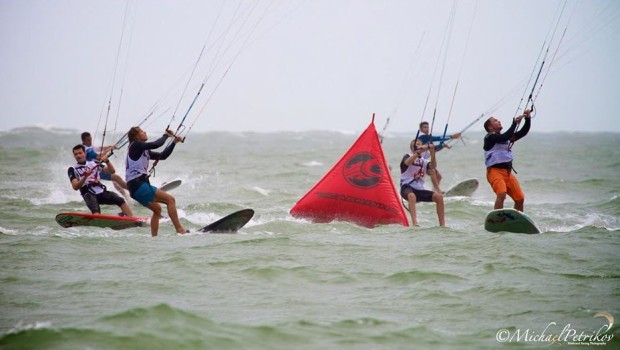


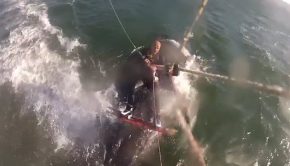
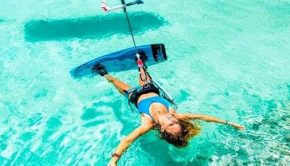
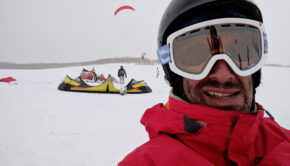
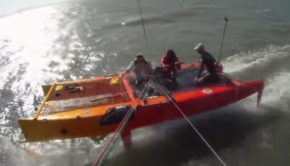
 We’ll keep your information safe.
We’ll keep your information safe.